40 reading carbs on food labels
How To Read Nutrition Labels - Mayo Clinic Diet 3. Check the % Daily Value The % Daily Value (DV) tells you how much a nutrient in a serving of food contributes to a daily diet. 2,000 calories a day is used for general nutrition advice. Low is 5% or less. Aim for low in saturated fat, trans fat, cholesterol, sodium, and added sugars. High is 20% or more. › diabetes › preventionParticipant Guide - More About Carbs - Centers for Disease ... 1. Starches 2. Sugars 3. Fiber 1. Starchy foods include: Starchy veggies Beans, peas, and lentils Grain foods Starchy veggies include: Corn Green peas Parsnips Plantains
Reading food labels: Tips if you have diabetes - Mayo Clinic Know what counts as a free food Just as food labels can help you avoid certain foods, food labels can also serve as your guide to free foods. A free food is one with: Fewer than 20 calories a serving Less than 5 grams of carbohydrates a serving Do the math Pay attention to serving sizes.
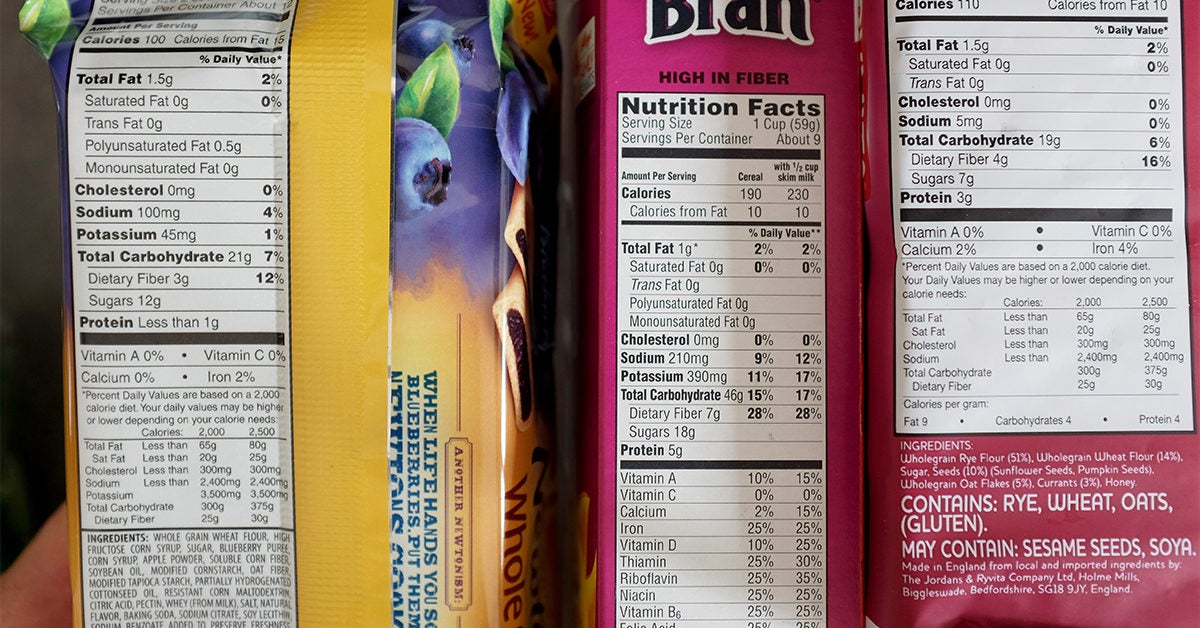
Reading carbs on food labels
How To Read Food and Beverage Labels - National Institute on Aging These foods have a legal limit to how many calories, grams of fat, or carbohydrates (carbs) they can contain per serving. However, if a serving size is very small, you may end up eating multiple servings in one sitting, ultimately consuming the same amount of fat, calories, and carbs as the regular version of the food. Multigrain. Reading Food Labels | ADA - American Diabetes Association The Nutrition Facts labels on foods are really the key to making the best choices. We'll cover the basics so that these labels make shopping easier for you. Get started Understanding Carbs You've heard it all. From carb-free to low-carb, to whole and empty carbs, it's hard to know what it all means. Learn more Food & Blood Sugar How to Understand and Use the Nutrition Facts Label | FDA - U.S. Food ... It can tell you if a serving of food is high or low in a nutrient and whether a serving of the food contributes a lot, or a little, to your daily diet for each nutrient. Note: some nutrients on the...
Reading carbs on food labels. health.usnews.com › wellness › foodNet Carbs vs. Total Carbs | U.S. News - US News & World Report Apr 05, 2022 · Reading food labels and measuring. This is the easiest way to count carbs, Groat says. For example, suppose a good contains 11 grams of carbs per 1/3 of a cup, and 4 grams of fiber. Food label reading guide | Nutrition Australia The Health Star Rating is a front of pack labelling scheme which can be used to make healthier food choices at a glance. The rating range is from ½ - 5 stars and the more stars, the healthier the choice. Recommended minimum star ratings for food and drink categories Remember: Reading food labels can help us make healthy choices. dtc.ucsf.edu › learning-to-read-labelsLearning To Read Labels :: Diabetes Education Online On a nutrition food label, subtract the fiber from the total carbohydrate amount. When you read food labels, the grams of sugar are already included in the total carbohydrate amount, so you do not need to count this sugar amount separately. The grams of sugar listed include both natural sugars, from fruit or milk, and added sugars. How to Read Food Labels | Your Low Carb Hub The below label shows there are 4.3g of carbs in a 15ml serving size which is equivalent to one tablespoon. 3.4g of this is sugar. There is 22.7g of sugar in 100ml, that's 5.6 teaspoons of sugar. The World Health Organisation (WHO) recommends no more than 5-10 teaspoons of added sugar in an entire day.
› health › food-nutritionSimple Carbohydrates vs. Complex Carbohydrates - Healthline Aug 19, 2020 · Be sure to include the following complex carbohydrates as a regular part of your diet: 1. Whole grains. Whole grains are good sources of fiber, as well as potassium, magnesium, and selenium.Choose ... How to Read Food Labels & Count Carbs | Allulose How to Read the Label Allulose Labeling Allulose is a form of sugar, so it will count toward total sugar and carbohydrate (CHO) grams on food and beverage labels, even though it is not metabolized in the body and does not contribute calories to the diet. How to Read the New Food Label - The Johns Hopkins Patient Guide to ... The percent daily value (%DV) can be used as a quick guide to the food label. Try the 5/20 rule when reading a label. Think about 5% or less as low for any nutrient and 20% or more is high for any nutrient. The %DV is a great way to compare food products if the serving size is the same. Fiber is the nutrient on the label that you want to aim ... Understanding Food Nutrition Labels | American Heart Association 1 - Start with the serving information at the top. This will tell you the size of a single serving and the total number of servings per container (package). 2 - Next, check total calories per serving and container. Pay attention to the calories per serving and how many calories you're really consuming if you eat the whole package.
How to Use the Nutrition Facts Label — Diet Doctor 3. Calculate net carbs per serving. Third, check the grams of dietary fiber per serving (circled in green, above). Subtract the fiber (green) from the total carbohydrates (blue) to get the net carbs. This chocolate has 9 grams of net carbs per serving (14g carbs - 5g fiber = 9g net carbs). Reading Food Labels for Carbohydrates - dummies To find the amount of carbohydrates in your foods, follow these steps: Look for the line that reads "Total Carbohydrate" on the label. The value on this line will tell you how many grams of carbohydrates are in one serving of the food. Check the number of servings per container to see if your package has one or more servings. How to Read a Food Label | Atkins The FDA requires that a nutrition label include the total carbohydrates. The amount of dietary fiber and sugars must also be listed. However, the law does not require that other carbohydrate subcategories appear. Some manufacturers voluntarily include the subcategories of sugar alcohol and "other carbohydrates." Others do not. Food Labels | CDC - Centers for Disease Control and Prevention If you eat the whole thing, you are eating 8 times the amount of calories, carbs, fat, etc., shown on the label. Total Carbohydrate shows you types of carbs in the food, including sugar and fiber. Choose foods with more fiber, vitamins, and minerals. Choose foods with lower calories, saturated fat, sodium, and added sugars. Avoid trans fat.
diabetes.org › get-to-know-carbsGet to Know Carbs | ADA - American Diabetes Association Carbs come in many different forms, but the main three are starch, fiber, and sugar. When purchasing packaged food, the term “total carbohydrate” refers to all three of these types. Learn more about nutrition labels. So how much is the right amount? Let’s start with the basics.
How to Read Everything on the Nutrition Facts Label - Food Network Total Carbohydrates: This is the total amount of carbs in the food. This gets broken down into dietary fiber (sometimes further broken down into soluble and insoluble fiber), total sugars, and ...
How To Read Nutrition Labels (Like a Pro) - Ditch The Carbs Firstly you need to understand the difference between total and net carbs. TOTAL CARBS = sugars + starches +fibre NET CARBS = total carbs - fibre Carbohydrates will be on the nutrition label are often broken down into carbohydrates, sugars, starch, and fiber. However, each brand may display its nutritional contents differently.
perfectketo.com › carbs-on-ketoCarbs on Keto: How to Time Your Carbs To Stay in Ketosis Nov 06, 2020 · A keto meal plan consists of carbs that rank low on the glycemic index — a tool measuring how much a particular food raises blood sugar levels[*]. On keto, you’ll consume whole foods that rank very low on the glycemic index (and have very low net carb counts), including green, leafy veggies, healthy fats like avocados, olive oil, and MCT ...
Understanding food labels | Diabetes UK Labels on the front don't include the amount of carbs, so check the label on the pack for the total carbohydrate, which includes carbohydrates from starchy food as well as sugars. The figures for sugars on traffic lights are for total sugars, which doesn't tell you how much of the sugar comes from natural sources, such as fructose and how ...
Reading labels | Diabetes UK Always look at the 'total carbohydrate' on the label when carb counting. This will make sure you are counting both the complex (starchy) and simple (sugary) carbs in your food. Both will raise your blood glucose (blood sugar) levels, and need to be matched with insulin.
diabetes.org › making-sense-food-labelsMaking Sense of Food Labels | ADA - American Diabetes Association One of the three types of carbohydrates in food is sugar. As of January 2021, labels must include added sugar to help you know the difference between sugar that occurs naturally in the food (like yogurt or fruit) and sugar that was added during processing (like in cookies, candy and soda). Many labels have already made the change.
PDF Read the Food Label for Carbohydrates - National Institutes of Health Read the Food Label for Carbohydrates Food labels help you choose foods that are lower in calories and in carbohydrates and sweeteners. Here is a food label for a 12-ounce regular soda. The label provides lots of useful information. 1. Serving Size and Number of Servings The serving size is 12 ounces. There's 1 serving in this container. 2.
How to Understand and Use the Nutrition Facts Label | FDA - U.S. Food ... It can tell you if a serving of food is high or low in a nutrient and whether a serving of the food contributes a lot, or a little, to your daily diet for each nutrient. Note: some nutrients on the...
Reading Food Labels | ADA - American Diabetes Association The Nutrition Facts labels on foods are really the key to making the best choices. We'll cover the basics so that these labels make shopping easier for you. Get started Understanding Carbs You've heard it all. From carb-free to low-carb, to whole and empty carbs, it's hard to know what it all means. Learn more Food & Blood Sugar
How To Read Food and Beverage Labels - National Institute on Aging These foods have a legal limit to how many calories, grams of fat, or carbohydrates (carbs) they can contain per serving. However, if a serving size is very small, you may end up eating multiple servings in one sitting, ultimately consuming the same amount of fat, calories, and carbs as the regular version of the food. Multigrain.
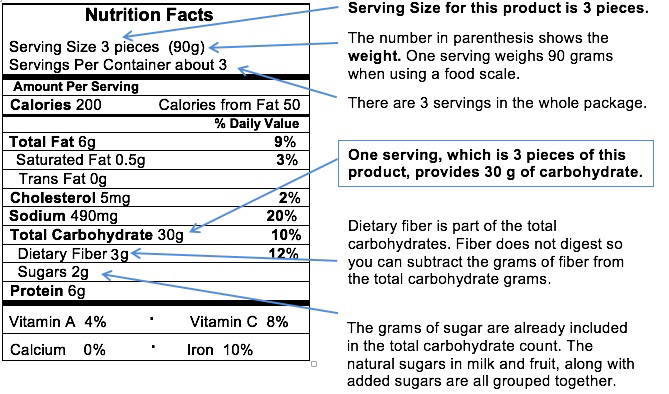

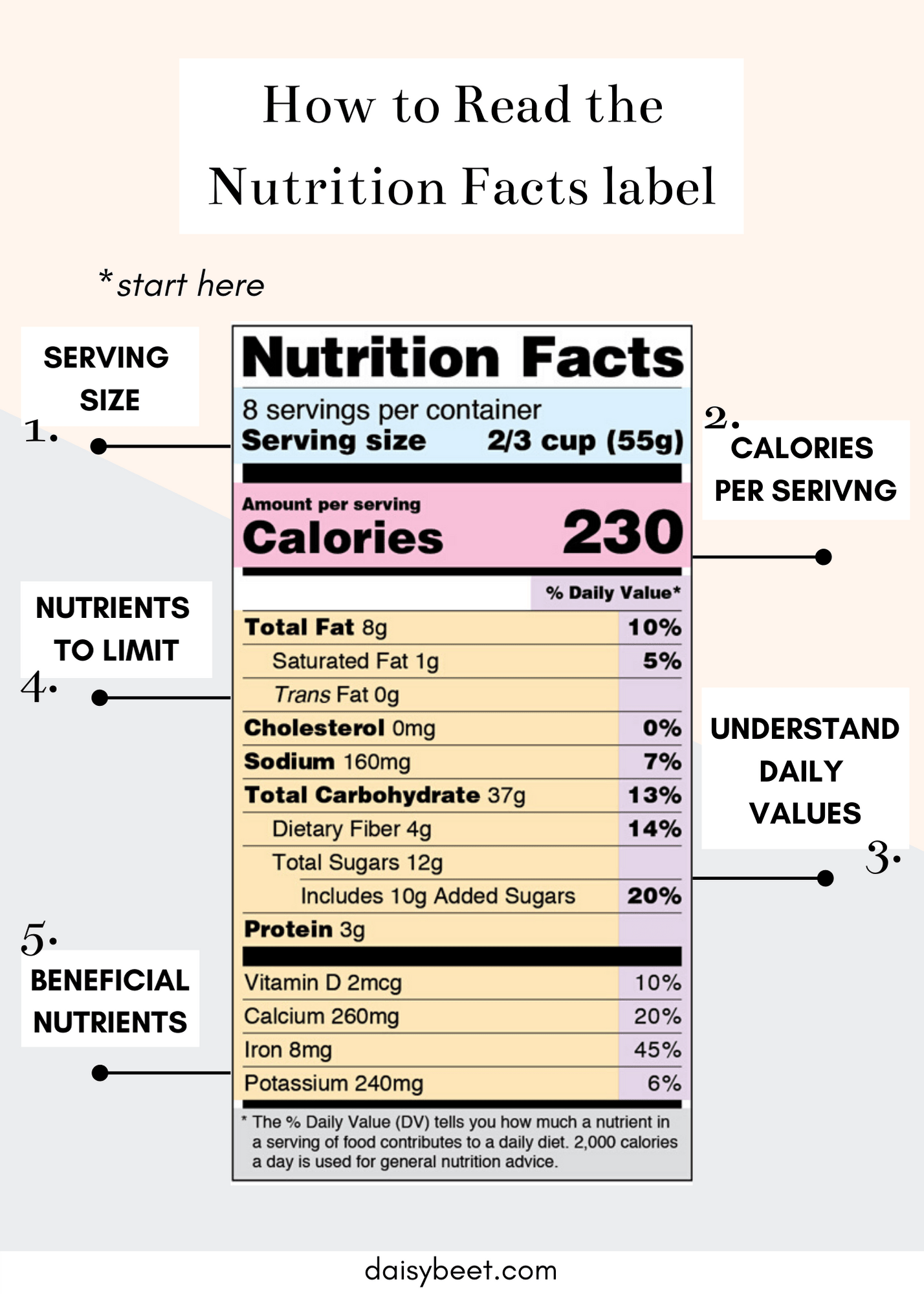
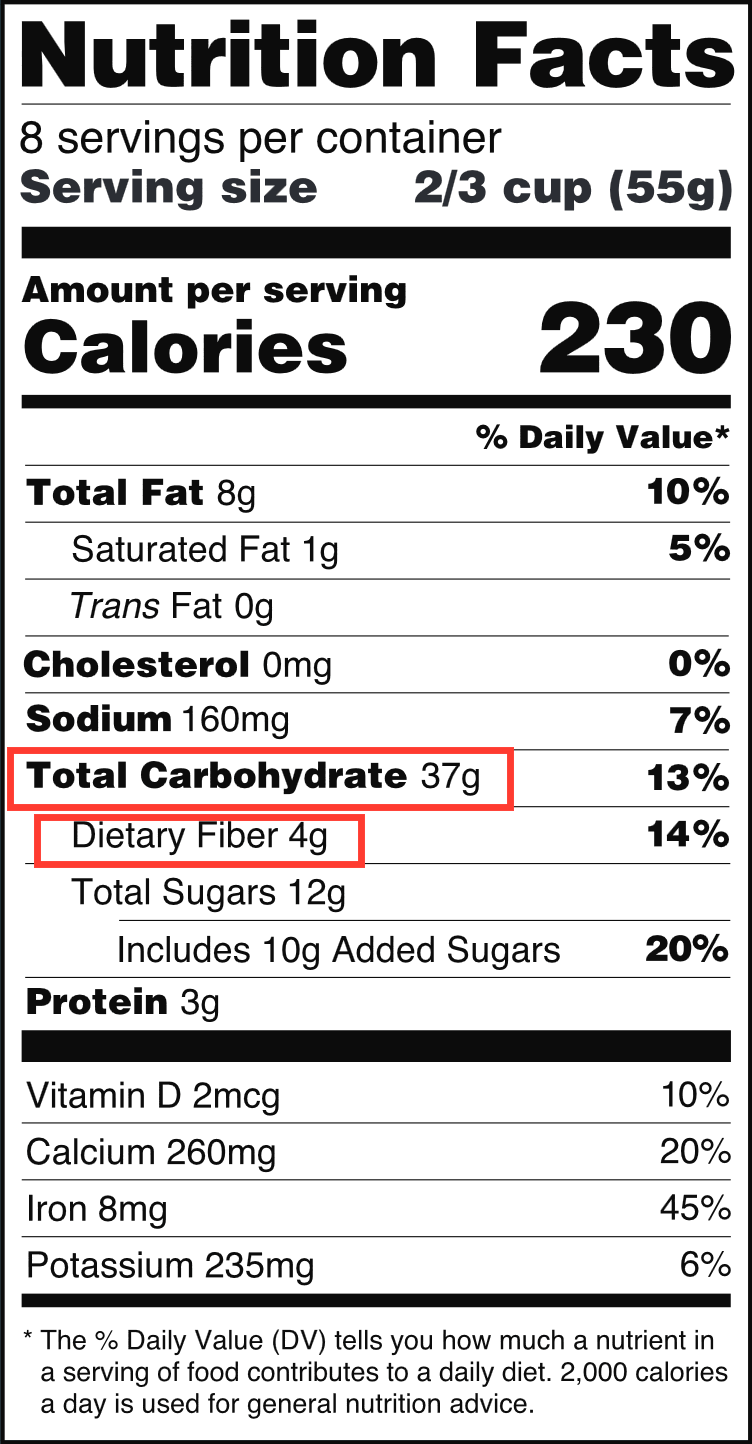
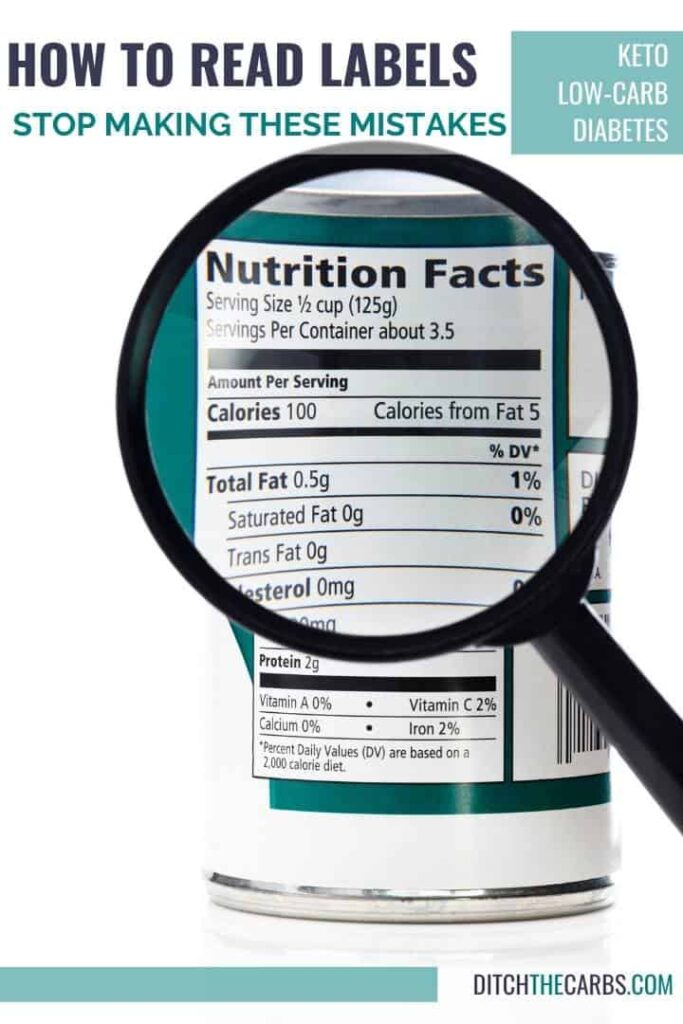
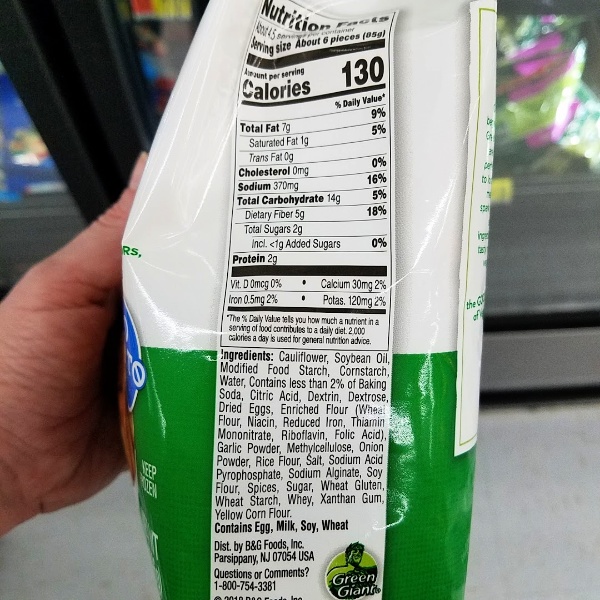
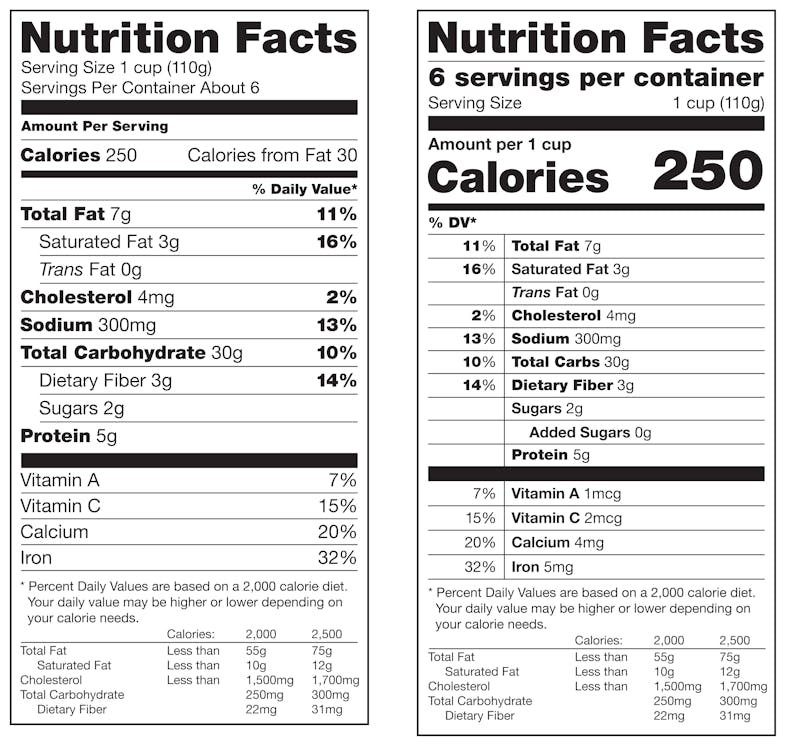
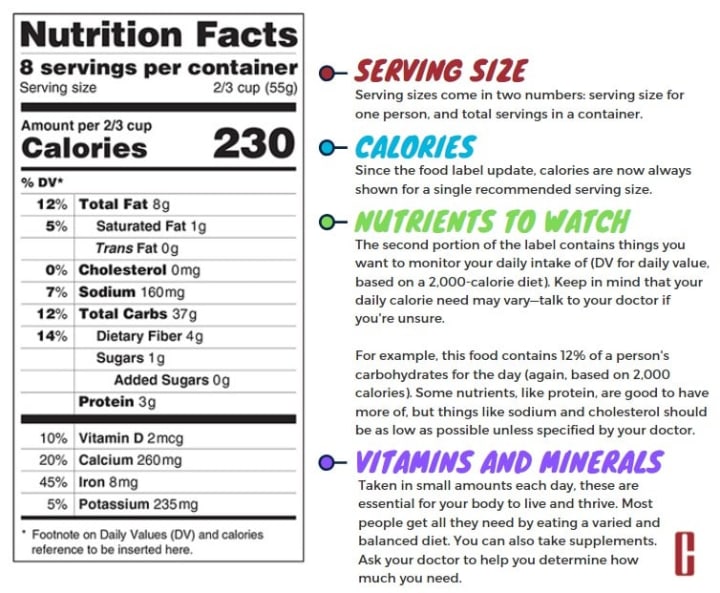


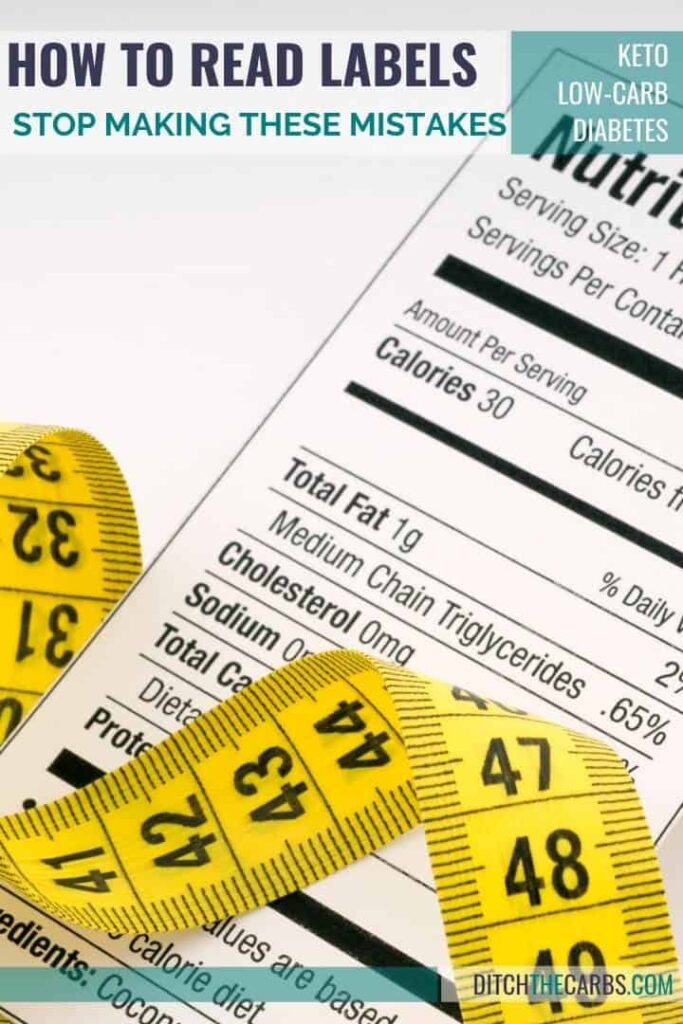
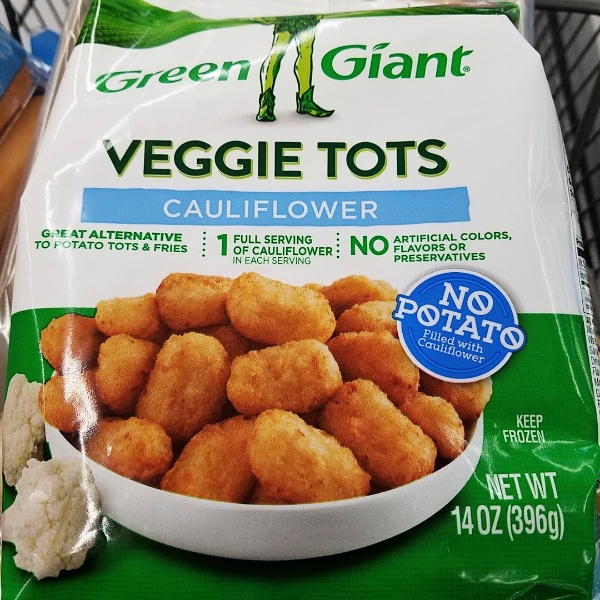

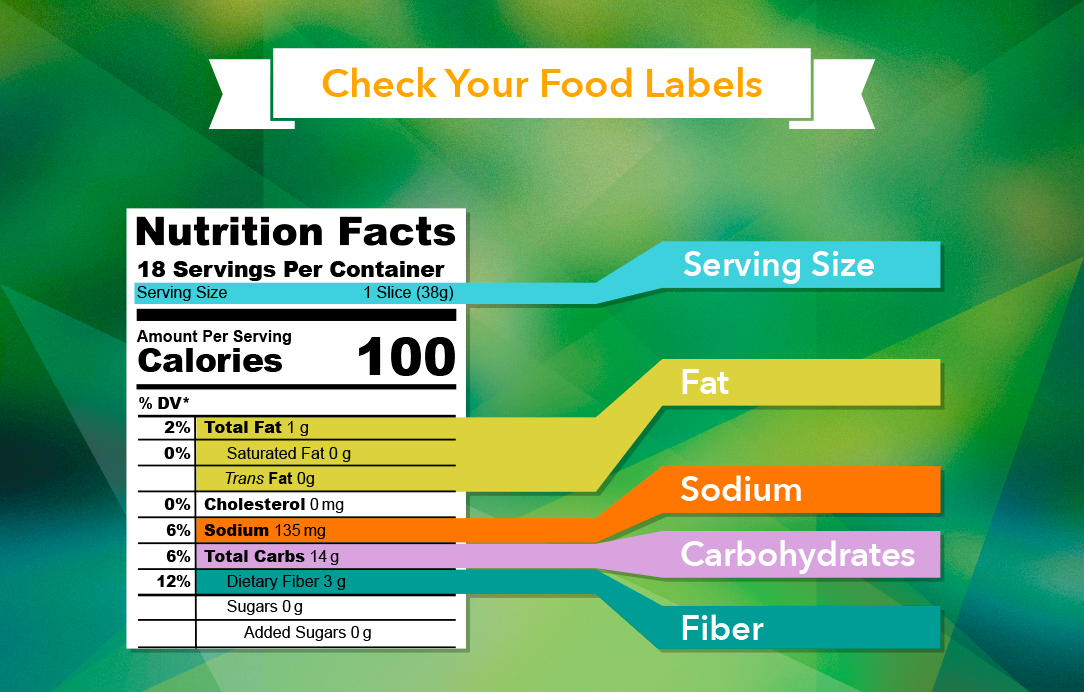
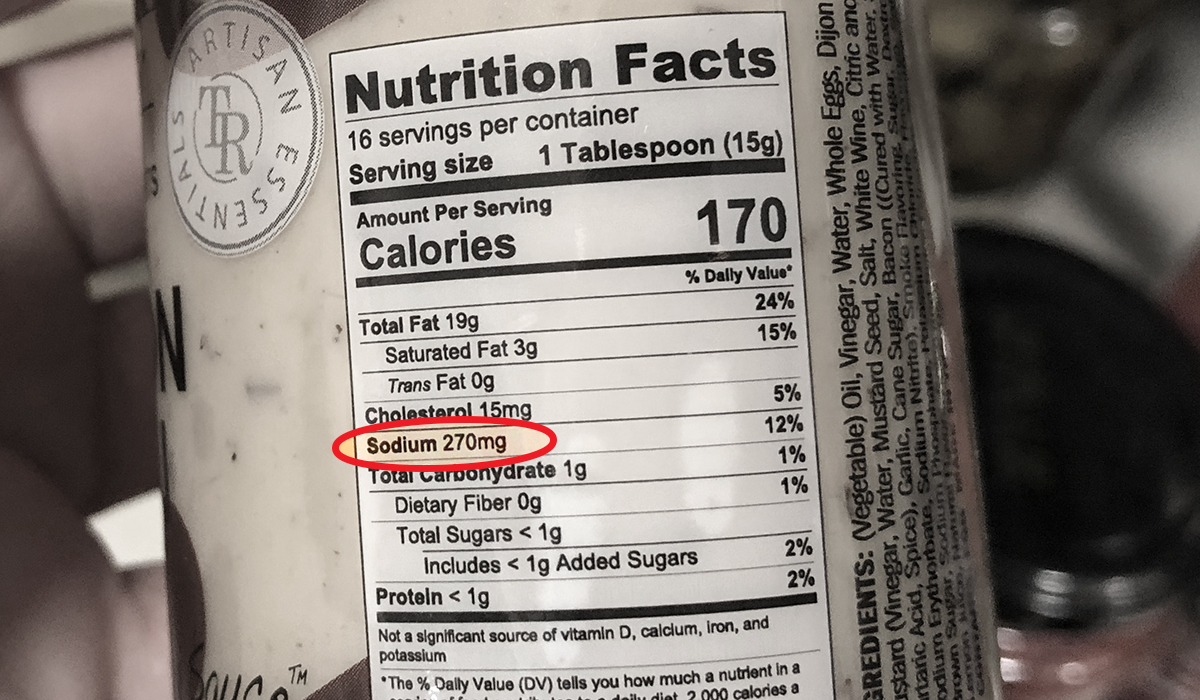
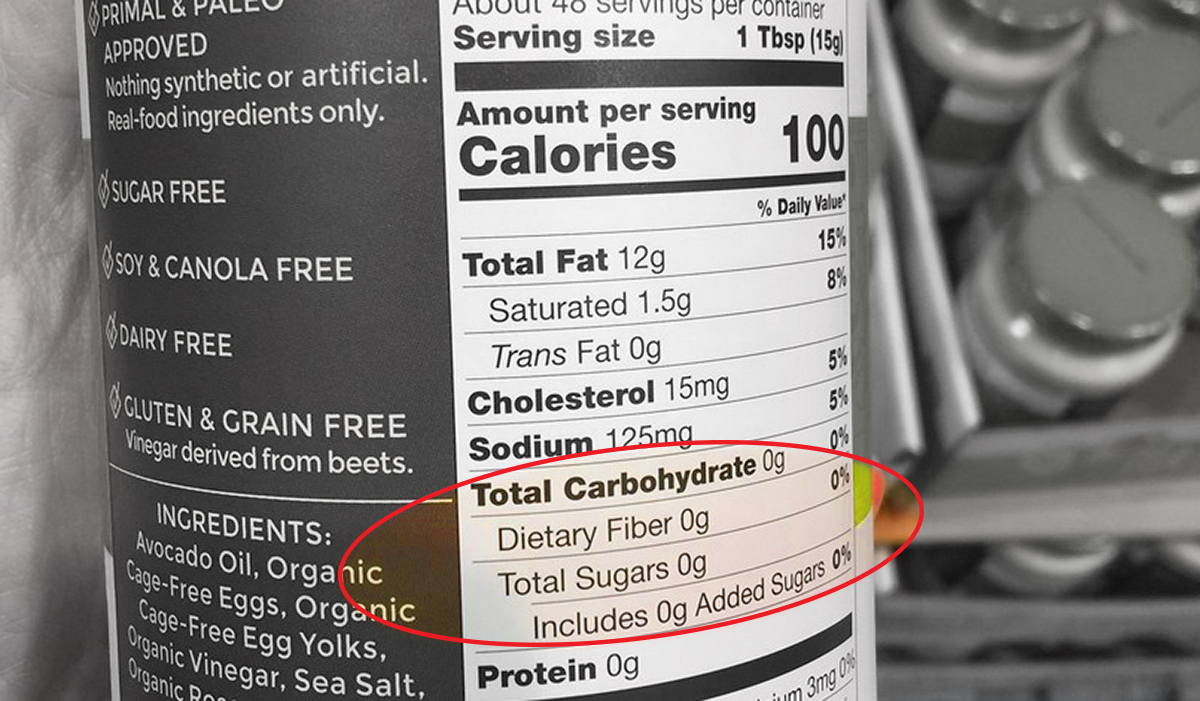

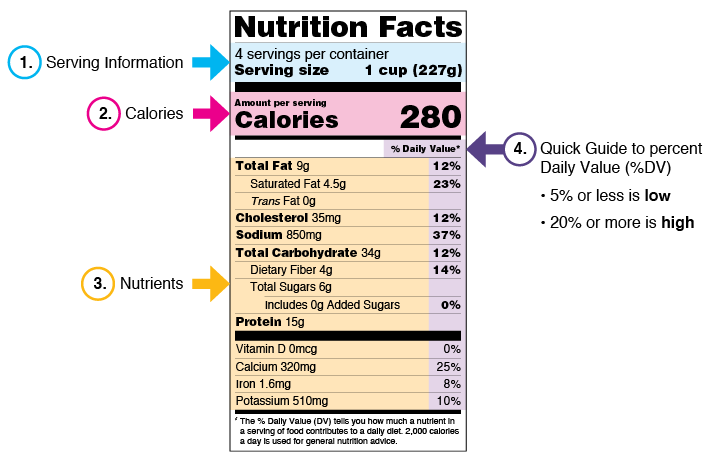



/Untitled-design-1--5755c3703df78c9b46903dab.jpg)


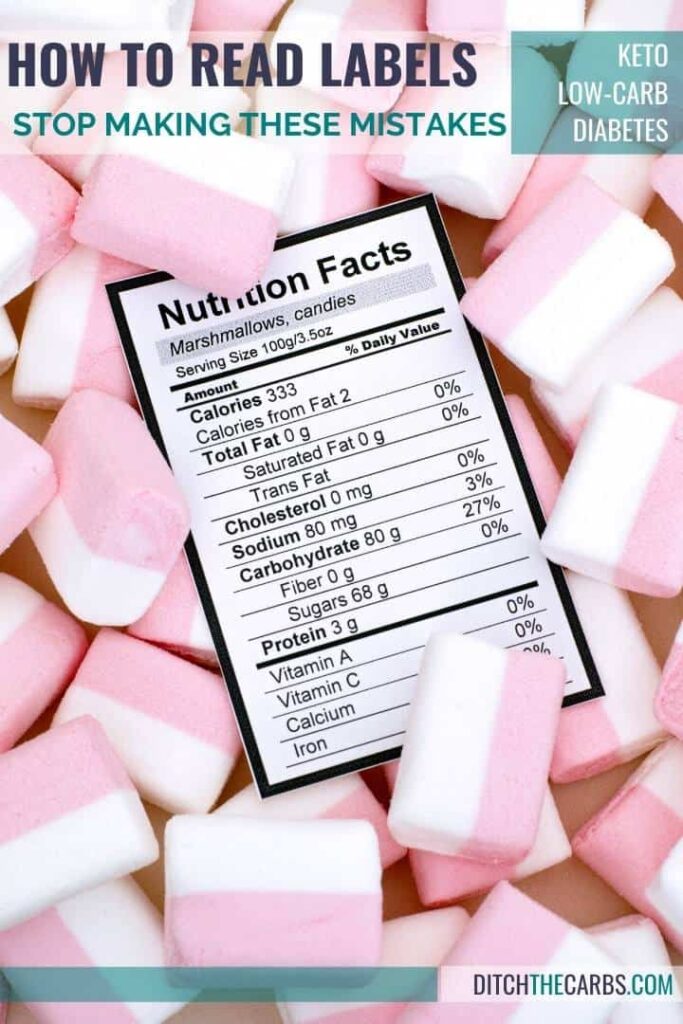

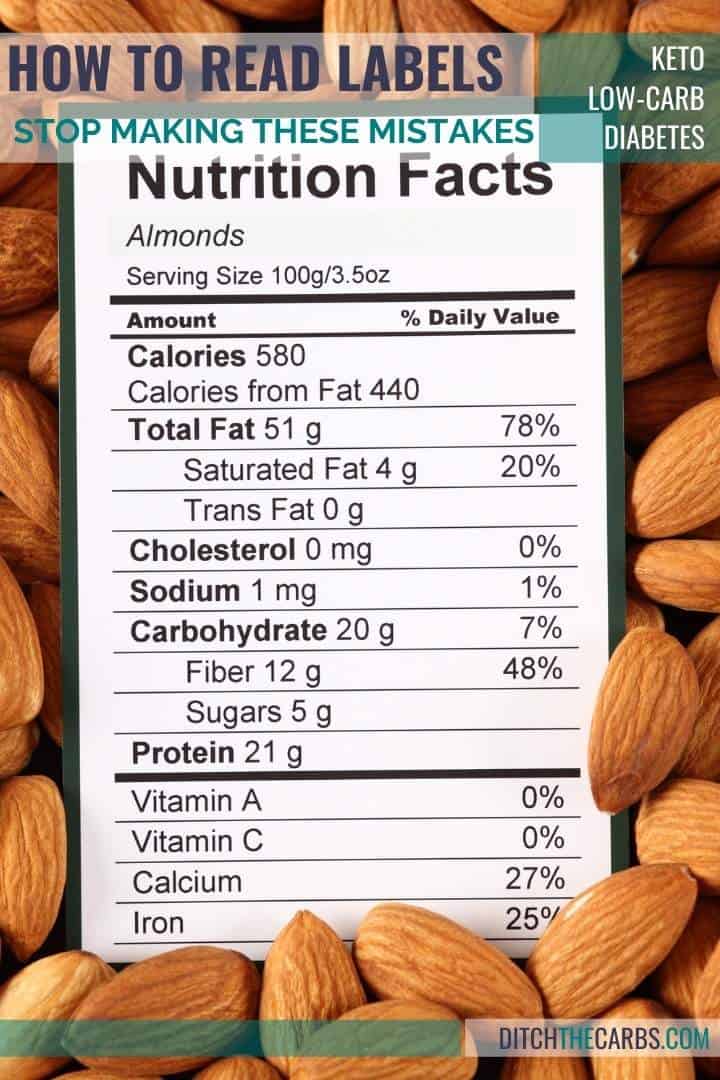

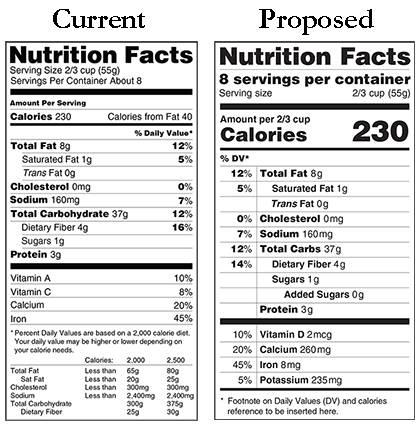



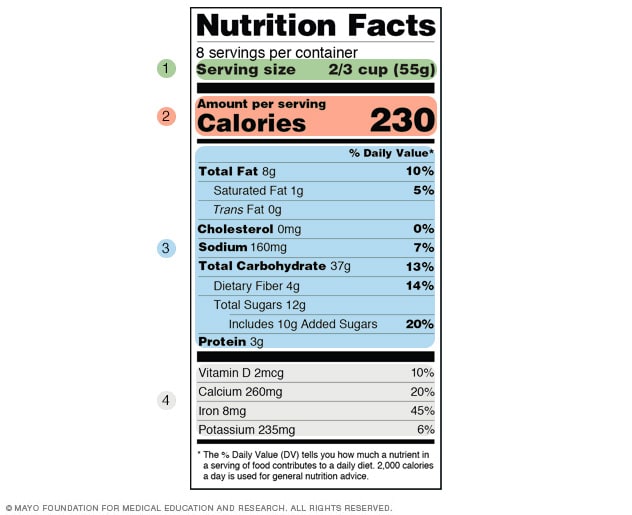
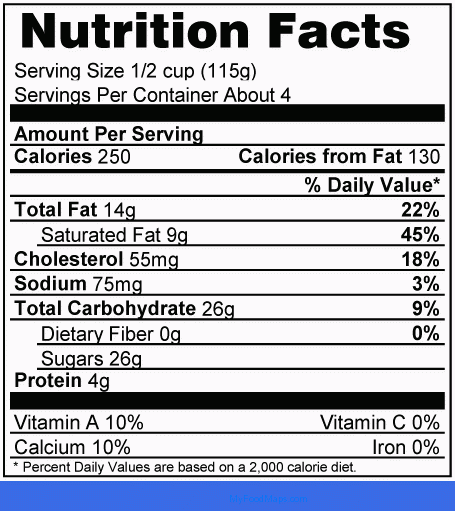
Post a Comment for "40 reading carbs on food labels"